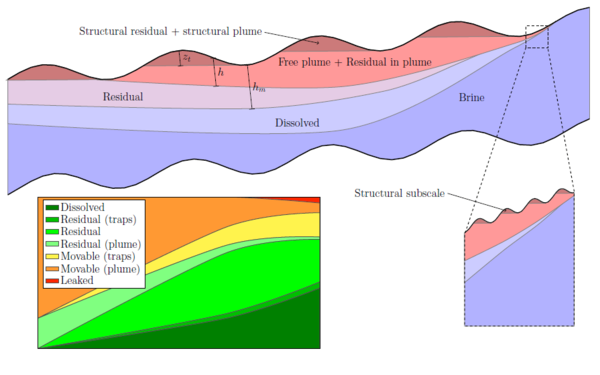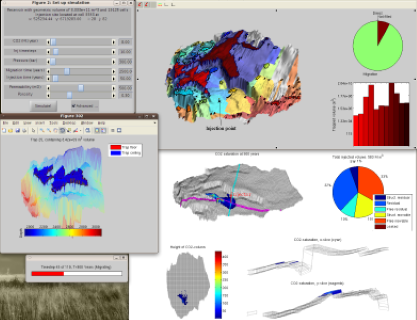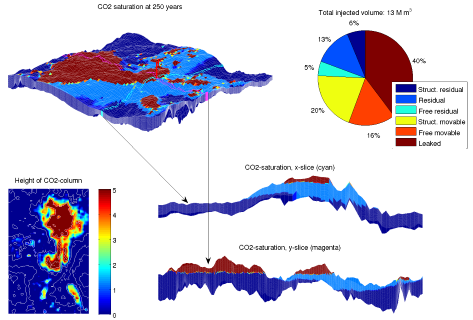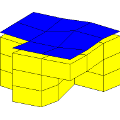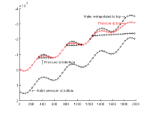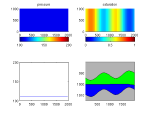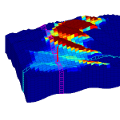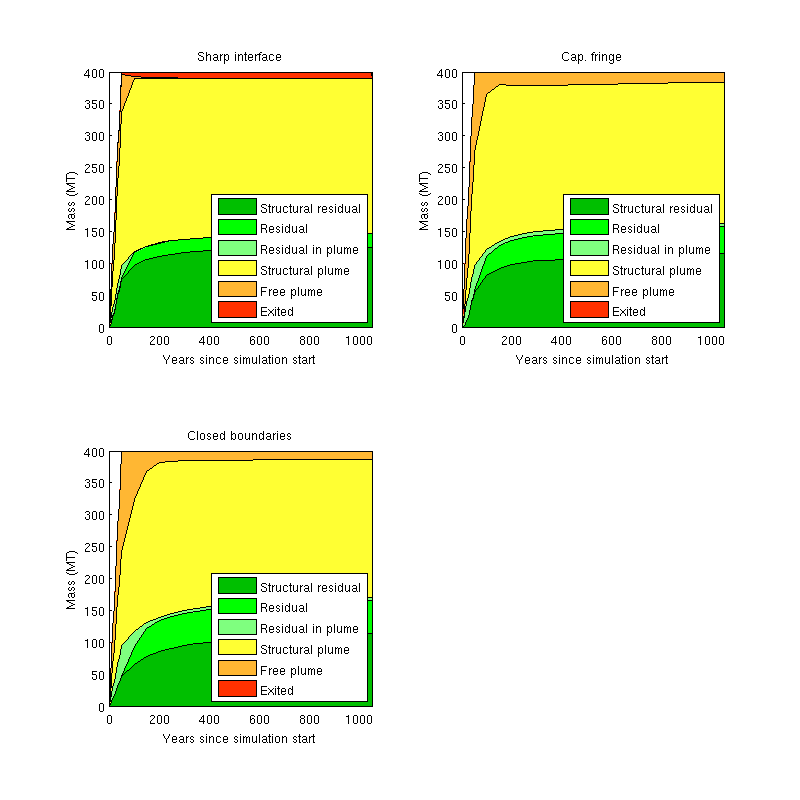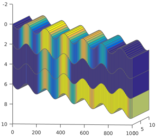|
Vertical-Equilibrium Models
Migration of CO2 in sloping aquifers is a truly multiscale problem with a large disparity in spatial and temporal scales. Vertical-equilibrium models offer an efficient means to accurately describe the combined large-scale and long-term effects of structural, residual, and solubility trapping. MRST-co2lab implements a wide class of vertical-equilibrium models that account for compressibility, impact of small-scale trapping, and hysteresis effects in the fine-scale capillary and relative permeability functions, using model formulations that are as close as possible to standard black-oil framework used by the petroleum industry.
|
||||||||||||||||||||||||||||||||||||

